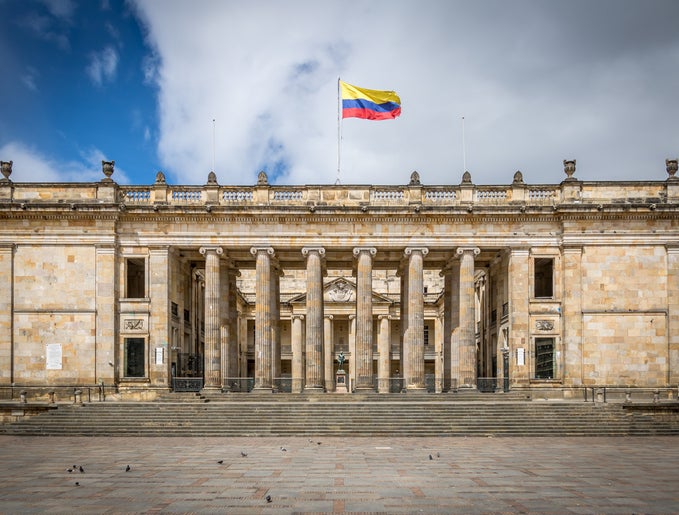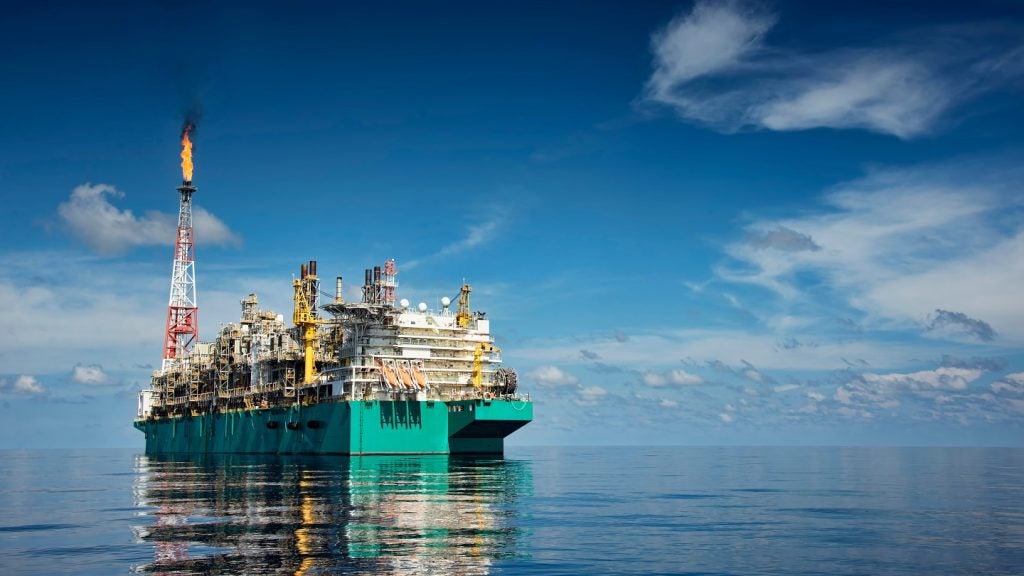
When commodity prices were close to all-time high levels, many exploration and production (E&P) companies were spending beyond their internal cash flows, relying heavily on the credit, equity and debt markets and asset restructuring for funding their capital budgets. The current financial crisis has not only put pressure on cash flows through lower commodity prices, but it has also made it difficult and expensive for these companies
to access external finance.
Overall, 2009 oil and gas spending was down as equity and debt markets tightened and bank financing terms became more stringent. Integrated and independent E&P companies have either scaled back their spending levels or postponed major capital-intensive projects until commodity prices return to more comfortable levels.
The economic downturn at the end of 2008 had a negative impact on demand for crude oil with the International Energy Agency and OPEC revising downwards their forecasts for oil demand growth. With the demand for crude oil increasing, especially from China and India, as well as the need to offset falling output due to natural field depletion, oil and gas companies have plans to increase investments in 2010.
Spending activity
Oil and gas spending was around $712 billion a fall of around 18% in 2009 compared with 2008. However, in 2010 capex activity is expected to rise, driven mainly by large national oil companies (NOCs), which have continued to spend despite the economic downturn. Most NOCs have the necessary financial strength to fund their capital-intensive projects, even in an adverse financial and economic environment.
See Also:
In 2009, over 350 oil and gas discoveries were announced. The majority of discoveries were in South and Central America, followed by the Middle East, Africa, Asia Pacific, Europe and North America. One of the largest finds was made by small producer Heritage Oil at the Miran West One field in the Kurdistan region of northern Iraq. It found nearly two billion barrels of oil and plans to drill a second well before the end of the
year.
How well do you really know your competitors?
Access the most comprehensive Company Profiles on the market, powered by GlobalData. Save hours of research. Gain competitive edge.

Thank you!
Your download email will arrive shortly
Not ready to buy yet? Download a free sample
We are confident about the unique quality of our Company Profiles. However, we want you to make the most beneficial decision for your business, so we offer a free sample that you can download by submitting the below form
By GlobalDataDiscoveries in Angola, Brazil and Nigeria may require significant development costs. Such development will drive E&P investment along with the development of unconventional gas and Canadian oil sands resources.
The fall in commodity prices, tight credit markets and a looming recession have led to a significant drop in the share price of E&P companies. The current market reflects the value of the proved reserves of the companies and largely ignores any upside potential from their unproved reserves. Most small and medium-sized companies have seen a huge drop in their valuations, which has presented opportunities for well capitalised
companies and reserve-seeking NOCs to acquire assets and companies at more comfortable levels.
Mergers and acquisitions
Over the last two years, the oil and gas industry saw major corporate M&A deals: ExxonMobil to acquire XTO Energy; Suncor Energy’s merger with Petro-Canada; ConocoPhillips‘ 50% interest in coal seam gas assets and LNG project from Origin Energy; Shell Canada’s acquisition of Duvernay Oil; XTO Energy’s acquisition of Hunt Petroleum; BG Group’s acquisition of Queensland Gas Company; and Lukoil’s 49% stake in ERG‘s ISAB refinery
complex.
With crude oil prices stabilising above $75 a barrel, M&A activities are expected to increase in 2010 with Chinese and Indian NOCs the major players. These companies will be looking to acquire overseas assets to expand their global reach and secure future energy supplies.
Oil and gas companies are, however, being more cautious about investment in some sub-sectors and regions.
In a world where internal business units compete for capital, higher cost or riskier projects will struggle to win investment in the current economic climate. The regions that are most likely to see a decrease in investment in the short term include mature basins where costs are typically higher, countries with unstable fiscal regimes and countries or regions where security is a concern.
Capex down by 18%
Volatile commodity prices, larger oil stocks and unstable demand made companies cautious about investment plans during 2009. Global oil and gas spending was down by around 18% in 2009 compared with 2008, after rising by 26% in 2008 compared with 2007.
Capital expenditure plans for 2009 were noticeably different in terms of the scope and strategy adopted by large companies. Even ambitious investment plans were accompanied by cost-cutting measures. Also, uncommitted investment plans were reviewed and revised in expectation of better deals in terms of lower raw material prices and service rates.
Furthermore, companies were reluctant to invest: in mature basins, which typically have higher costs, in regions with high geo-political risk and in countries with unstable fiscal regimes.
NOCs to drive oil and gas capex
The capital expenditure of oil and gas companies witnessed a significant decrease in 2009, after the surge in 2007/08. However, 2010 capex activity is expected to rise, driven mainly by large NOCs. A 12% growth is expected in oil and gas capital expenditure for 2010 and the total capex of the leading listed oil and gas companies are likely to exceed $798 billion, driven mainly by NOC investments. Total capital expenditure by listed NOCs
(for which data is publicly available) is expected to register a 16% growth to around $375 billion in 2010.
Investment climate improves
Crude oil prices recovered by 57% to around $75 per barrel from $45 per barrel in January 2009. Currently, crude oil and natural gas are trading at around $82 per barrel and $5.7 per mcf.
The global economic environment and the short and long term outlooks for commodity prices play a vital role in the capital expenditure plans of E&P companies. With major economies showing some signs of recovery in the second half of 2009, global economic conditions are expected to improve in 2010. Emerging economies such as India and China will be key growth drivers for global resurgence.
Wait and see
Making the right investment decisions in a volatile price environment is one of the greatest challenges faced by leading oil and gas companies and many have not finalised their investment plans for the coming year.
The global refining industry is witnessing a slump following the global economic downturn after the high return period of the past few years. Uncertain product demand, decreasing refinery margins and a surplus refining capacity are having a combined negative effect on the profitability of refining operations. This will continue to cast a shadow of uncertainty over the future of refinery margins thereby compelling integrated companies to
divest their non-profitable assets to fund other businesses.
Brazil powerhouse
Brazil’s energy sector underwent major reforms during the latter half of the last decade. Market liberalisation and the adoption of the petroleum investment law made the domestic energy industry perform better in terms of E&P.
The country has quickly emerged as one of the important regions for offshore crude oil production. With new fields, mostly offshore, and huge reserves being discovered in recent years, huge reserves in the Santos and the Rio de Janeiro areas have propelled Brazil’s crude oil production from offshore areas and this is expected to increase.
Brazil is set to become a major producer following pre-salt discoveries by Petrobras, which plans
to invest around $28 billion as part of its $174 billion business plan to 2013.
Petrobras plans to increase total oil and gas production from 1.9 billion bpd in 2008 to 2.7 billion bpd and 3.9 billion bpd in 2013 and 2020, respectively. The biggest contribution to domestic production growth will come from pre-salt discoveries with an estimated 1.2 billion bpd between 2013 and 2020.
Offshore drives global drilling spend
Global offshore drilling spends has increased in recent years especially during 2004 to 2008. However, the global economic slowdown, decreasing demand for oil and gas, and a drop in the prices of crude oil and natural gas is expected to have a negative effect on offshore drilling activity in 2009.
With the global economy expected to recover during 2010, exploration and development activity is expected to increase. The global drilling spend is estimated to grow at an annual average growth rate of about 6.6% in the forecast period of 2009 to 2020.
Unconventional attraction
Shale plays have a key role in increasing the overall natural gas resources in the US. The growing importance of shale gas is substantiated by the fact that of the 1.8 trillion cubic feet of total potential resources, shale gas accounts for 616tcf (33%).
The most rapidly developing shale plays in the US are Barnett (near Fort Worth, East Texas), Fayetteville (Northern Arkansas), Haynesville (Northern Louisiana), Woodford (Eastern Oklahoma), Antrim (Upper Michigan) and Bakken (North Dakota, spans border into Canada). Another rapidly developing shale play in the US is the Marcellus (stretching into Western Pennsylvania, Western New York, and West Virginia).
There have been huge investments in the unconventional natural gas industry in the US and in 2008 alone, companies spent over $28 billion in asset transactions, acquisitions and joint venture deals to acquire shale acreage. After major production increases in recent years by Chesapeake Energy, XTO Energy, Southwestern Energy and other major independent players, the novel extraction technology has proven to be free from significant
technical risks.
The success of these companies has attracted oil and gas companies looking to enter into these lucrative plays and can only do so through corporate mergers or asset acquisitions. With large companies from Europe and Asia eyeing the huge unconventional gas industry in North America, the overall level of investment in the industry is expected to increase as the world energy market stabilises.
Oil sands revival
Global energy investments are being affected by a combination of major issues in the global oil and gas markets. Most of the companies throughout the oil and gas supply chain are scaling back on planned projects and investments. In particular, projects that are considered to have high risk and require huge credits are the first to be delayed or shelved altogether.
The financial crisis and the oil price collapse adversely affected many unconventional oil and gas projects by making production uneconomical. Consequently, a lot of the exploration and expansion projects in Canada were delayed or suspended. However, falling construction and operating costs, and oil price recovery in recent months is a positive sign for the industry especially in Canada.
The recovery in prices, especially for crude oil, has encouraged some companies to restart their stalled projects. However, sustained levels of crude oil and natural gas prices, a positive recovery of the global economy and thereby energy demand will be critical factors for a sustained recovery.
Discoveries drive E&P
In 2009, over 350 oil and gas discoveries were announced worldwide. The majority of these were in South and Central America (29%), followed by Middle East and Africa (26%), Asia Pacific (23%), Europe (18%) and North America (5%).
Petrobras was the leading company with 50 discoveries. To capitalise on the new discoveries, companies will be required to increase their capital budgets for 2010 and beyond. Some of the discoveries in Angola, Brazil and Nigeria need significant development and lifting costs, which require a long-term oil price in excess of $70 per barrel.
Corporate factor
The second half of 2008 was a highly volatile period. Following the high deal activity of 2007, the drop in commodity prices and the global economic recession decreased the appetite for deal activity by the end of 2008. Deteriorating asset values caused more financial difficulties leading to a decrease in the ability of the financial institutions to continue lending, which is hindering investments.
The global economic slowdown resulted in reduced demand for oil and gas. As a natural response to the falling demand, the appetite for risk decreased leading to a low deal activity from the fourth quarter of 2008.
With crude oil prices stabilising above $75 a barrel, M&A activities are expected to increase in 2010 with Chinese and Indian NOCs expected to be the major players. These companies will look to acquire overseas assets to expand their footprint and secure future energy supplies. The unconventional resource deposits will offer significant growth prospects and attract huge investments from both IOCs and NOCs.





